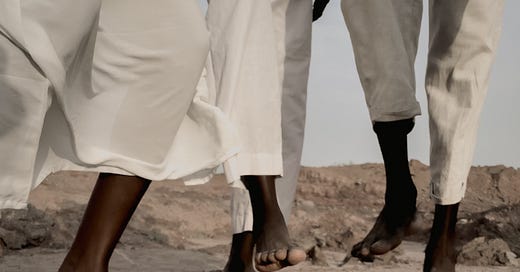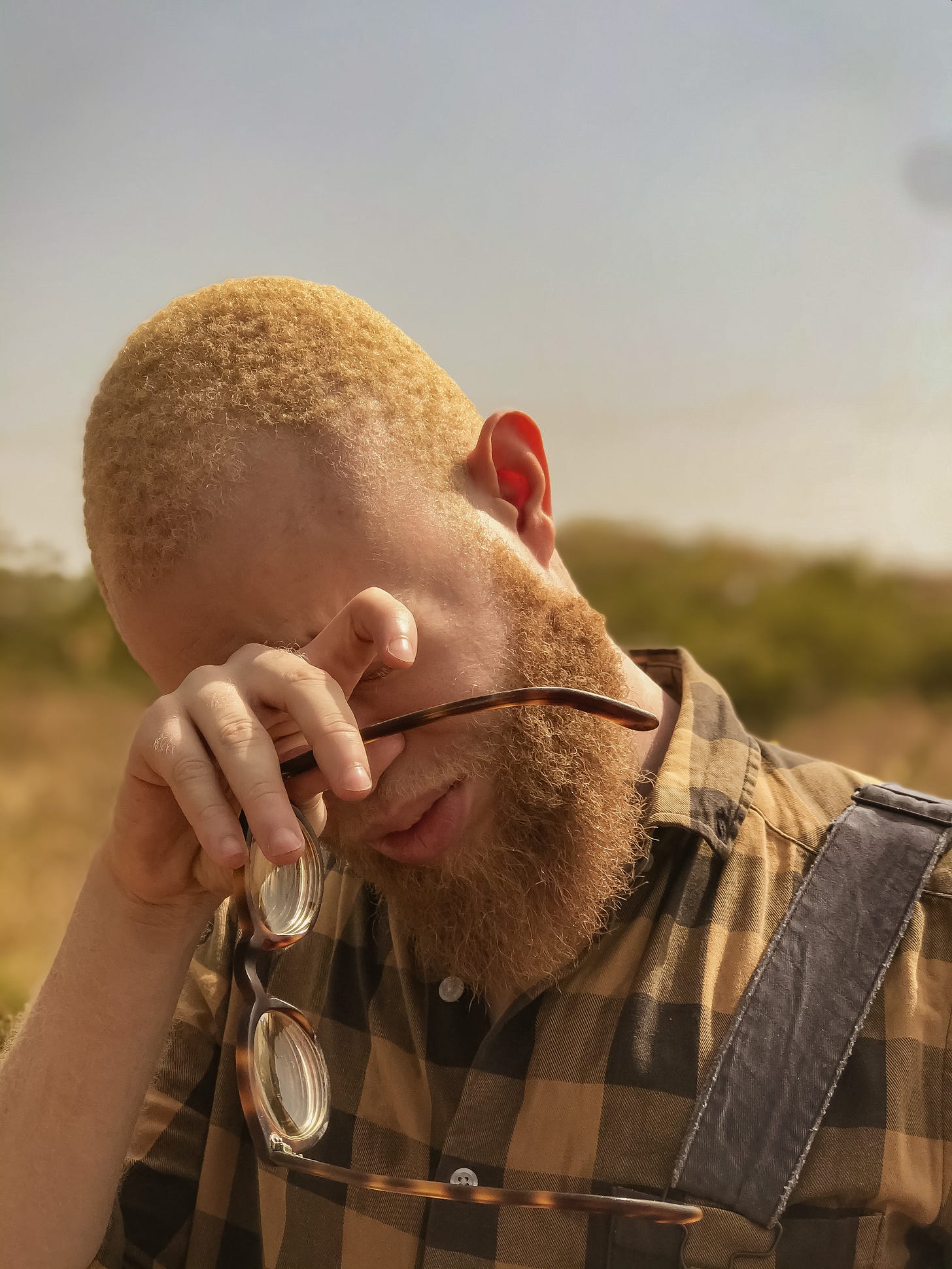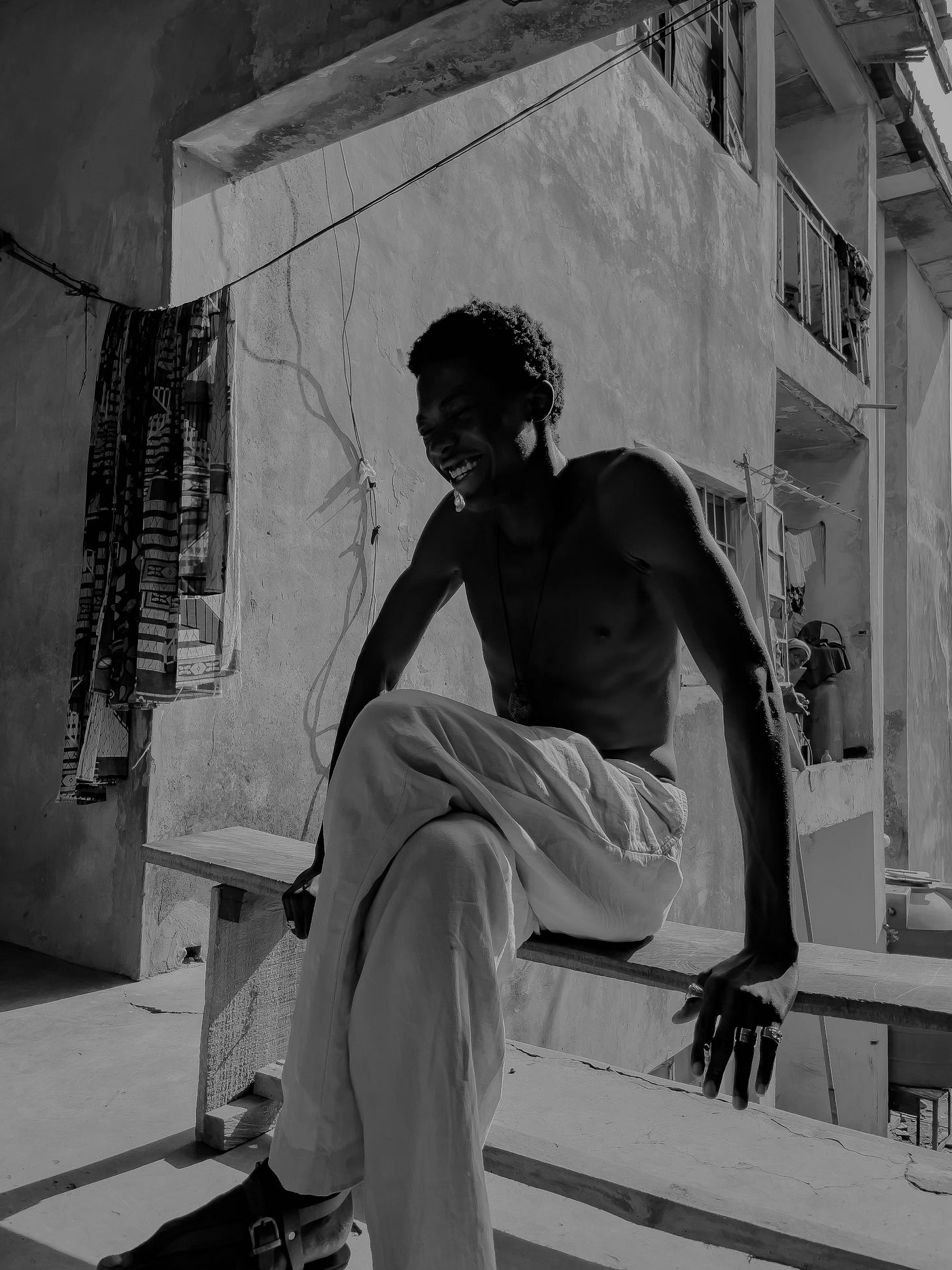The rise and fall of rhythm, a trio of feet pictured mid-movement: if this is a dance, then notice the trace of pleasure in the incline of their lower bodies. Anything noted as a trace is momentary, and anything momentary might recur. Such as the memory of men seeing each other after a long absence—the burst of glee, the lift of spirit. A dance remains in the air.
Blessing Atas: “You can make something powerful from simple things.”
This shot was taken at Guzape, Abuja.
I already had a run down with my models on what I was going for and the story I was trying to tell; the rest came easy I would say. I got an idea for them to dance and raise their feet while I captured. We tried a few times till we got some great shots.
The entire body of work from this project is special to me because it was the first time in a long time I caught myself happy to create. I also challenged myself. The project speaks about one's journey to find freedom.
My approach to photography is keeping things simple. I was inspired by a photographer on creating with what you have, and that you can make something powerful from simple things.
Whenever I am working on a piece or a project, once I get an idea I usually write them down and over time build on it. Sometimes it takes me months to create a work or sometimes the very day I get inspired. I try to get who I am working with comfortable, so that I would be able to capture emotions for the story I am trying to tell. When editing I like to keep it simple also.
I think photography is impactful in every way: it is a moment in time that is framed for a lifetime, and if it’s a great photograph, time after time it’s likely to bring the same emotions you felt when you first saw the photograph. Photography has saved me in so many ways. Being able to have a means to express yourself that people around you—and even across the world—can relate to is magical.
Two other photographs by Blessing Atas
Support Blessing Atas
Blessing Atas is a phone photographer, visual artist and storyteller based in Abuja, Nigeria. Her work focuses on bridging heritage and culture with modern living. She began taking photographs as a high school student after she couldn’t get back to painting. You can read more about her in this interview, and see more of her work on Darkroom and Instagram.
Last Week — KC Nwakalor
I used a small point and shoot camera to make this photograph. Just staring at the mirror in our small studio apartment, I could see almost everything we had and the most important person to me—my wife—in that small reflective frame.
Read More: Isolating With You
Support Tender Photo
This is the 33rd edition of this publication. Every week I feature one photograph and the photographer who took it: you’d read a short caption from me, and a statement from the photographer. My goal is to set up conversations with the work of early to mid-career African photographers. If this newsletter was shared with you, consider subscribing, and if you have already subscribed, forward to a friend who loves photography.









I am grateful the second photograph exists. It possesses my favorite kind of joy - the well earned one. I think it is because of the tenderness. But it could also be because of the kind respect the photographer shows the person in the frame.